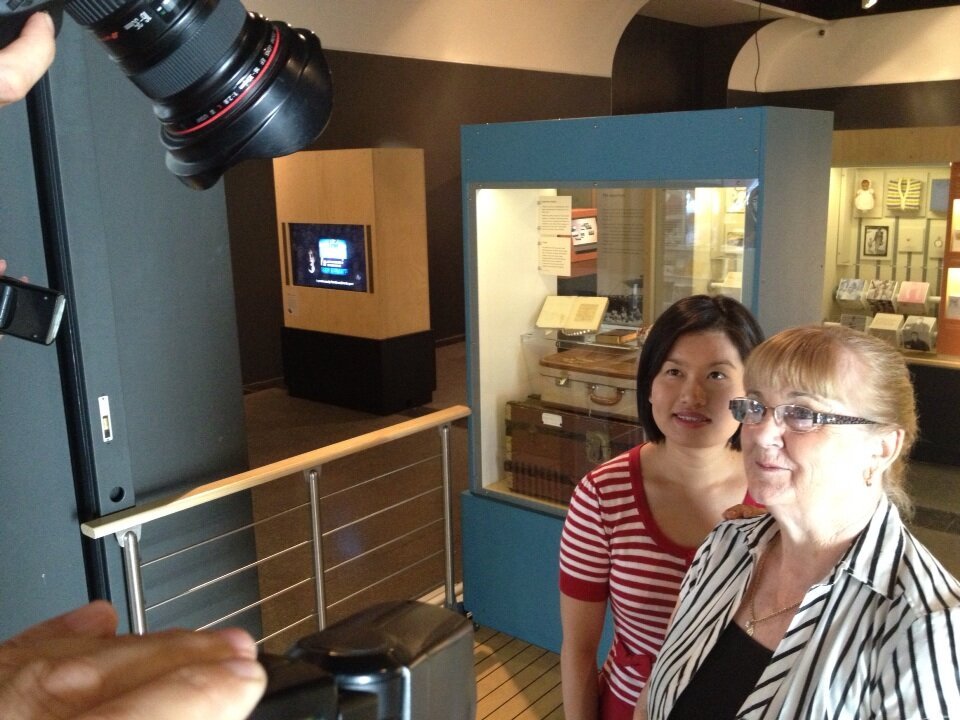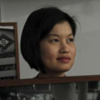
Last week I went to Albury to install our travelling exhibition On their own – Britain’s child migrants at Albury LibraryMuseum. This lively venue is the only regional stop in our national tour, which has so far taken in Adelaide, Melbourne, Fremantle and Canberra.
While Albury was not a major destination for British child migrants, it does have strong links with Australia’s immigration history because of its proximity to the Bonegilla Migrant Reception and Training Centre near Wodonga. Bonegilla (1947–71) was Australia’s largest and longest-operating migrant reception centre and many of the post-war migrants who passed through it later settled in the Albury-Wodonga region.
I was fascinated to discover that a small group of British children was sent to St John’s Orphanage in Thurgoona, in the outer suburbs of Albury, in 1950. The 22 girls sailed on Asturias and their arrival was reported in the Border Mail under the misguided headline ‘Orphans arrive here to start their life afresh.’ One of the youngest in the group, five-year-old Pam Wright, was told she was an orphan, even though both her parents were alive. She says, ‘The day before I was shipped, I was with my father.’
Pam’s father tracked her down in Australia and tried to claim her but was told she had been declared a ward of the state. After pleading his case to politicians, Pam was eventually released into her father’s care. In 1990, 40 years after being sent from England, she was finally reunited with her mother. You can hear more about Pam’s story in her interview with ABC Radio.
Pam spoke eloquently about her experiences and their enduring impact on her life at the official opening of the exhibition on 23 February. I spoke of how stories like Pam’s reveal Albury’s connections to broader national and international narratives of child migration. I also mentioned how the exhibition has created opportunities for many former child migrants to reunite with family, friends and the material culture relating to their migration. But I never expected the drama that would soon unfold!
As I led visitors on a tour of On their own, I could hear the commotion at the back of the group when a visitor, Connie – who by chance was visiting from WA – rounded the corner and saw her younger sister Beryl in a photograph in the exhibition. Once her shock and excitement subsided, Connie realised that she too was in the photograph, along with her three brothers. All five siblings were sent to the Fairbridge Farm School at Pinjarra, south of Perth, and this photograph captured them on the very day they arrived in Fremantle on Ormonde in 1950, the same year as Pam Wright.
I had been intrigued by this photograph since I first saw it in the State Library of WA back in 2009. It was part of a collection of well-constructed arrival photographs, surely designed to encourage continued government and public support for the child migration schemes that were once considered generous philanthropy but are now widely condemned as flawed social policy. I was interested in the subjects of this well-composed photograph – the boys in their distinctive striped Fairbridge ties; the girl on the left, who we now know is Connie, with her Orient Line suitcase – but I never expected them to be a family group.
This latest encounter during the national tour of On their own once again reinforces the value of telling personal stories and presenting living history in museums. It also demonstrates the wonderful role museums play in collecting this history, making it accessible and reconnecting people with their heritage and material culture. Here’s to Connie, Beryl and chance encounters.
Kim Tao
Curator, Post-Federation Immigration
On their own – Britain’s child migrants is showing at Albury LibraryMuseum from 23 February to 28 April 2013.
